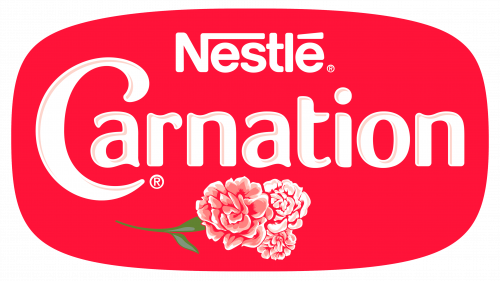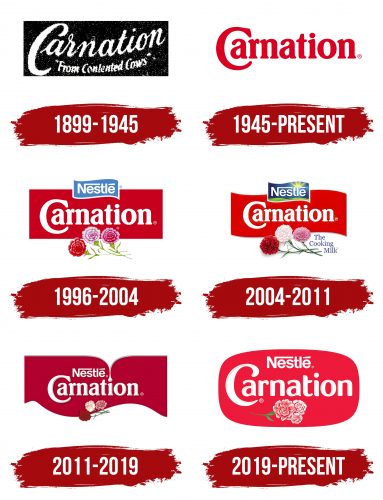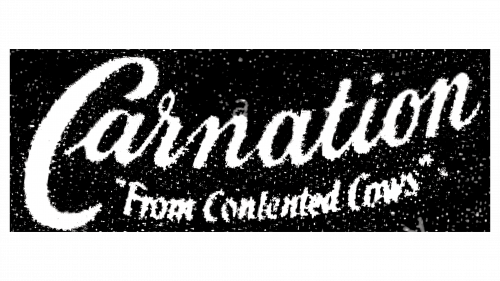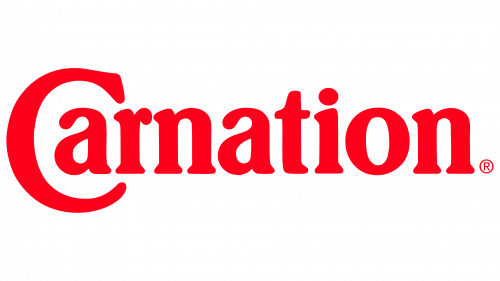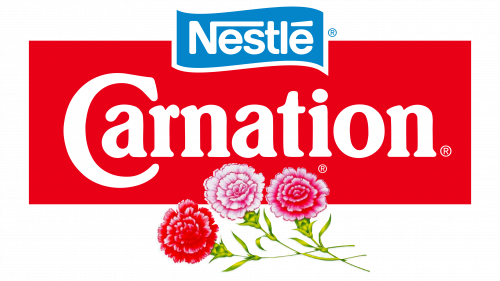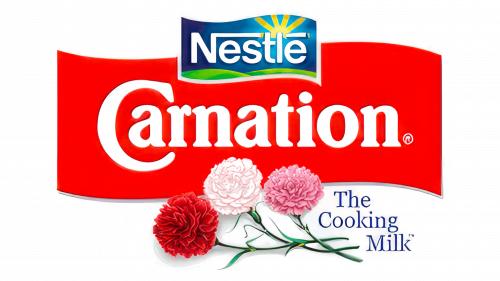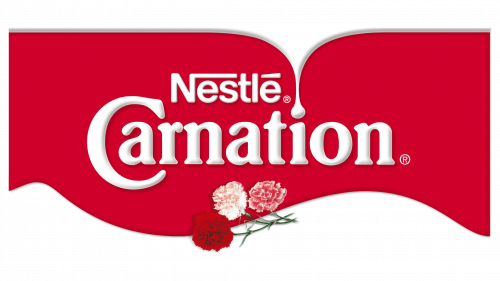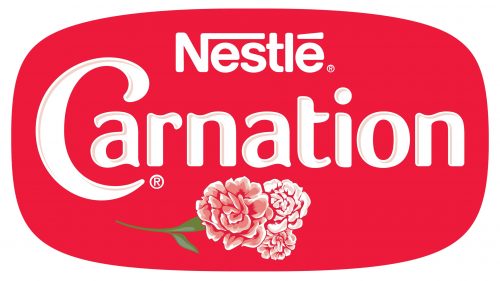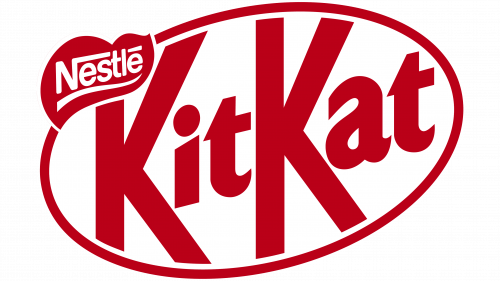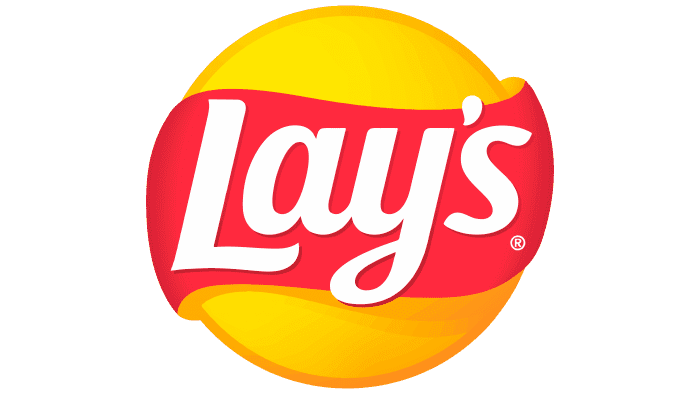The Carnation logo is expressive and precisely conveys the company’s core philosophy of product quality. It shows friendliness and care for every customer. High-quality dairy products have always attracted all segments of the population. Mothers ensured their children consumed quality foods, and this healthcare tradition was passed on to grandmothers. Multiple generations have grown up on Carnation products, and each new flavor and innovative offering has instantly met high demand.
Carnation: Brand overview
Elbridge Amos Stuart and E.A. Bainbridge established the Pacific Coast Condensed Milk Company in Kent, Washington, in 1899, marking the beginning of Carnation’s history. Condensed milk was a novel product when it was first introduced, enabling it to be kept for long periods without refrigeration. This led to the establishment of the corporation.
Stuart coined the term “Carnation” in 1901 after he noticed cigars bearing the Carnation brand in a tobacco shop window. He liked the name and chose to use it for his milk brand. Later, the carnation-flower-themed logo was introduced, and it quickly became a recognized representation of the company.
During the company’s early years, it encountered various difficulties. There was fierce competition, and customers did not receive the concept of canned milk well. On the other hand, Stuart actively advertised his product utilizing cutting-edge marketing techniques at the time because he was confident in its potential.
For the brand, 1904 was a pivotal year. At the St. Louis World’s Fair, the corporation earned a gold medal, which greatly increased the brand’s reputation and customer confidence. As a result of this recognition, the company increased sales and its market visibility.
The brand started to expand its product line in the 1910s. When the military needed durable supplies during World War I, a dry milk line was introduced and quickly gained popularity.
The corporation expanded substantially during the 1920s. The brand started to expand internationally, joining the markets of Canada and Europe and opening additional operations around the nation. The business used this period to introduce the well-known “Milk from Contented Cows” marketing campaign, which became one of the most well-known catchphrases in American advertising history.
Like many other corporations during the Great Depression, the company experienced financial troubles in the 1930s. However, the business survived this time very well because of its diversification strategy and reputation for making high-quality, reasonably priced items.
Throughout the 1940s and 1950s, the firm kept adding new products to its lineup. A range of dairy goods, including cheeses and ice cream, and a baby food line were introduced. The corporation also invested significantly in radio and television advertising to further solidify the brand’s position.
The company continued to diversify during the 1960s and 1970s. It started with garden equipment, entered the pet food business, and bought several food and drink businesses.
A pivotal moment in the company’s history happened in 1985 when Nestlé paid $3 billion to acquire the business. At the time, this was one of the biggest business acquisitions in US history. The brand maintained its identity and legacy while growing under Nestlé’s direction.
The firm, now part of Nestlé, continued its innovative work in the food product industry in the 1990s and 2000s. Nutritious bars and ready-to-drink beverages were among the new product lines introduced.
Carnation Breakfast Essentials is a product line introduced in 2005 to offer a full breakfast. These goods immediately became well-liked by parents looking for wholesome solutions for their kids and busy shoppers.
In 2008, a new, lower-fat version of traditional condensed milk was released in response to consumer demand for healthier food options.
Many products’ packaging was redesigned in 2010. The updated look kept the brand’s iconic aspects while updating it to appeal to a younger demographic.
In 2012, the brand added additional flavors to its collection of baking products, including chocolate and caramel condensed milk. This action was intended to satisfy consumers’ rising demand for home baking.
In 2015, a line of lactose-free products was introduced to accommodate customers with lactose intolerance. These included some variations of Breakfast Essentials and condensed milk without lactose.
In 2017, the brand introduced an organic version of its traditional condensed milk, further solidifying its position in the organic food market. This action was taken in response to the rising demand for natural and organic food items.
The Breakfast Essentials range experienced major growth in 2019. TaProtein shakes and ready-to-drink bottles, targeted at teenagers and young people, were among the new flavors and formats released.
2020 saw the addition of new high-protein Breakfast Essentials products. These products were created in response to the rising demand—particularly from athletes and young people—for high-protein breakfast options.
Carnation Plant-Based Cooking Milk, a plant-based substitute for dairy products, was introduced in 2021. This action was taken in response to the rising demand for plant-based and vegan diets. The product was created specifically for baking and cooking.
In 2021, the brand unveiled a revised recipe for its traditional condensed milk that minimizes sugar without sacrificing flavor. This was a component of Nestlé’s larger plan to enhance the nutritional value of its offerings.
2022 marked a stronger emphasis on sustainability. The company started utilizing recyclable materials and less plastic in packaging several of its products, making them more environmentally friendly.
In 2023, the firm continued its innovative work in the functional food industry. It unveiled a new range of goods with added vitamins and minerals, catering to different age groups and dietary requirements.
This year, the brand also expanded its reach in the e-commerce space by introducing loyalty programs and exclusive online deals for digital platform customers.
The company has extended its partnership with culinary experts and food bloggers, producing fresh recipes and material highlighting the varied applications of the brand’s products in contemporary cooking.
Meaning and History
The company has put significant effort into all aspects of its operations, with special attention given to its identity. The identity has evolved, reflecting the company’s continuous development and improvement of its food products.
What is Carnation?
It is a brand owned by Nestlé that offers a variety of dairy products. Known primarily for its evaporated milk, it is a staple in many families for cooking and baking. The brand’s product line includes evaporated milk, sweetened condensed milk, and powdered milk. The company emphasizes quality by offering versatile ingredients that help enhance the flavor and texture of food. The brand is widely available in supermarkets, grocery stores and online retailers.
1899 – 1945
The first identity was created in a vintage style, featuring a contrasting black-and-white emblem. Against a black graphite background, two separate phrases were displayed. The first presented the brand, and the second informed about the quality of the dairy products.
White text on a black background stood out and was easily readable. Designers managed to engage potential customers’ imaginations: despite the absence of patterns and drawings, those who saw the logo associated it with milk, clean fields, lush grass, and well-kept livestock—a harmonious image formed naturally.
The cursive script added lightness to the logo and created a sense of movement. Some playfulness was achieved with the rounded edges of the initial capital letter. Although the letters were similar to each other, each retained its individuality. The information block about the products was smaller than the brand name, emphasizing its secondary importance.
1945 – today
Trends demanded renewal and transformation in the post-war period. The company’s logo underwent significant changes, adopting a modern, somewhat bold look. The new format, including the words’ writing, color, and font, has been immortalized and is still used today. The easy-to-pronounce phrase “Carnation” became integral to all subsequent logos.
Each letter’s conciseness, charisma, and light dynamics made the text part of the logo unique and did not require alterations.
On a white background, the word “Carnation” in red looked striking, drawing attention and focusing all accents on itself. The first capital letter stood out, emphasizing the company’s reliability and authority. The other letters were clear, slender, and visually appealing. Glimpses of glamour and tradition are intertwined in this logo.
When the word “Carnation” appeared on the packaging, consumer trust was automatic. During this period, the company significantly expanded its product range.
1996 – 2004
In 1996, the well-known word “Carnation” shone brightly on the new logo. Essentially, there were no transformations in the font or other significant changes. However, considering the new logo elements, the beautiful brand name changed its tone. The letters became white, and the background was a rich and deep red.
The logo’s geometry is sharply defined. A large rectangle with the background color is a magnet for attention, directing focus first to it, then to the brand, and finally to the flowers. This shift in focus enhances the overall positive visual effect.
The multicolored plants are particularly interesting. Three of them symbolize the product’s natural quality and superiority. The multicolored carnations, as elements of the brand’s heritage, are symmetrically incorporated into the logo’s graphics and tone.
In 1996, the word “Nestlé” appeared on the brand’s emblem for the first time, complementing the information line. It identifies the brand’s affiliation with one of the most well-known companies, increasing interest and trust. White letters on a blue background with a border look elegant and graceful.
2004 – 2011
The new logo’s key characteristics are clarity and precision. All its elements are graceful and charismatic, embodying brightness and harmony. The producer of quality dairy products aims to evoke positive and life-affirming emotions.
The brand name is gentle, like May flowers. The beautiful carnations are detailed meticulously, with every part of the plant and its contours carefully drawn. In the new interpretation, the word “Nestlé” shines like never before, creating a powerful and unstoppable visual effect. The number of colors and their aspects is impressive, evoking associations with the excellent taste of the products.
Special attention is drawn to decorative touches, such as the green field next to the word “Nestlé,” the text in the lower right corner, and the carnation petals.
2011 – 2019
The brand identity now pays more attention to visual impact. White letters reminiscent of milk, with highlights and tone variations, stimulate taste buds, creating a desire to try the milk or bake fluffy pancakes quickly. The white text on a red background looks impeccable, and a wavy, irregularly shaped border enhances the charm.
The company name, previously blue, is now perfectly white. The letters are slightly larger, and the spacing between them has changed, adding harmony.
The flowers on the logo stand out against the sleek, modern design, once again taking on a new appearance. The color contrast aims for minimalism and gentleness. White, red, and pink colors highlight the brand’s heritage.
2019 – today
The brand name not only remains on the logo but also gains sophistication. During this period, it is imbued with playfulness and kindness. The edges of the letters are beautifully and gently rounded, alternating between static and dynamic. This effect is hard to explain logically, but it is present.
The light, milky color of the letters on the red background continues to attract attention. The “Nestlé” inscription is easy to read and looks aristocratic.
The number of flowers remains three, but two carnations seem hidden from viewers in the new identity. Only the carnation in the foreground, with its leaves and stems, is visible. This suggests that many flavors and products remain undiscovered. Modern consumers can expect many more surprises.
